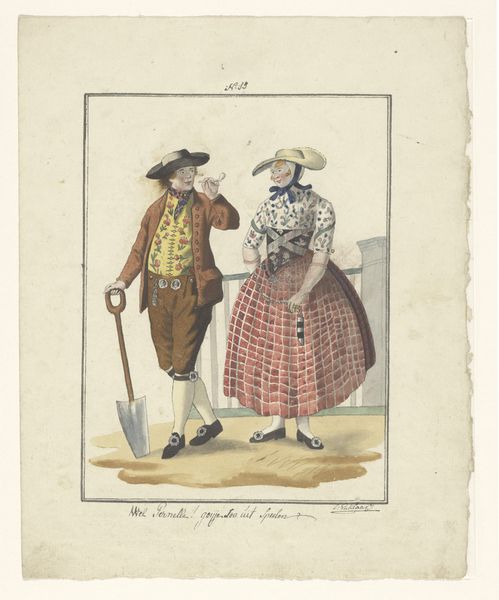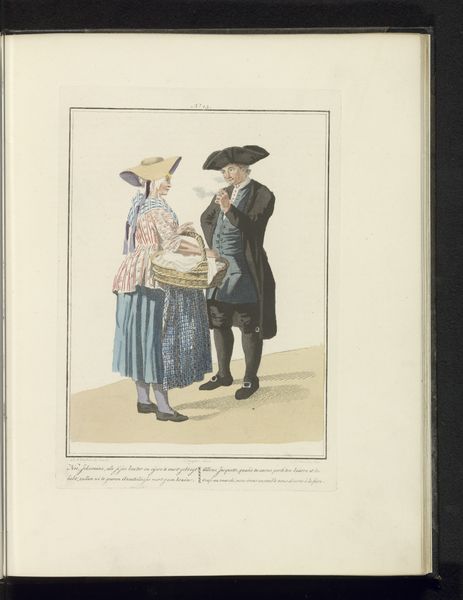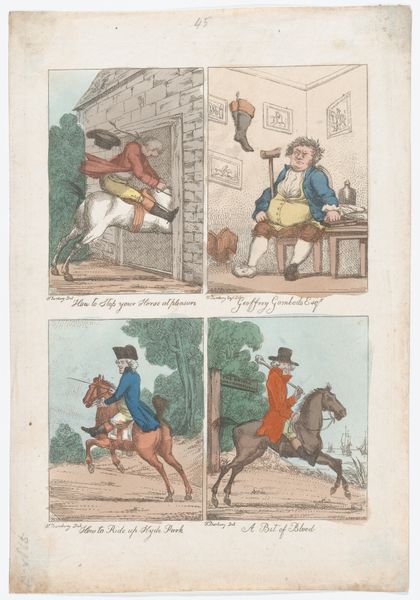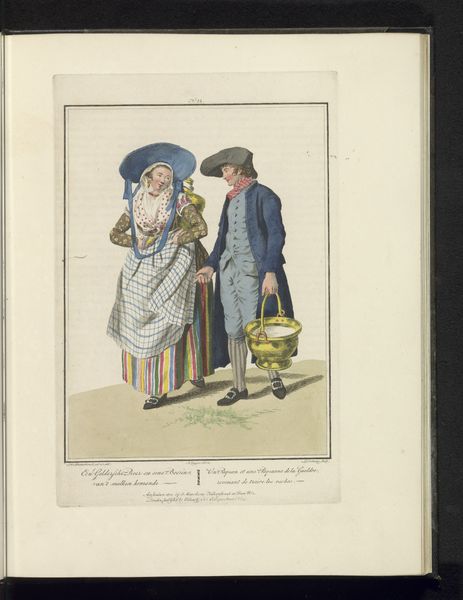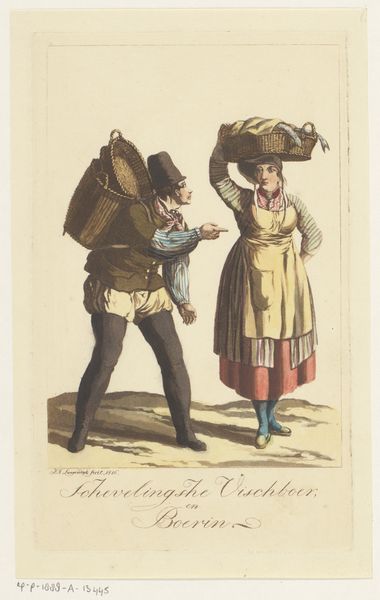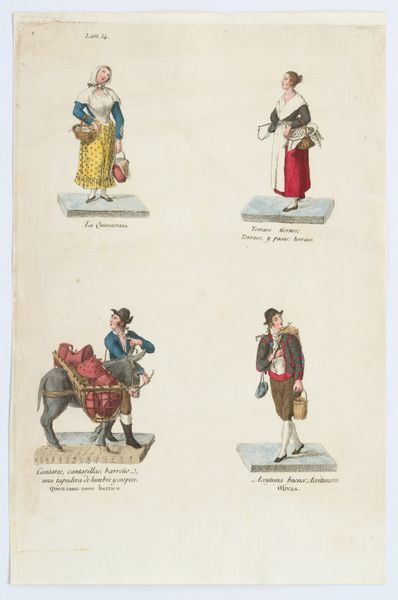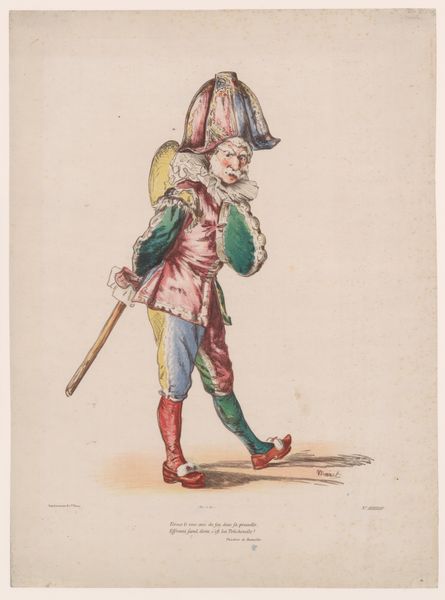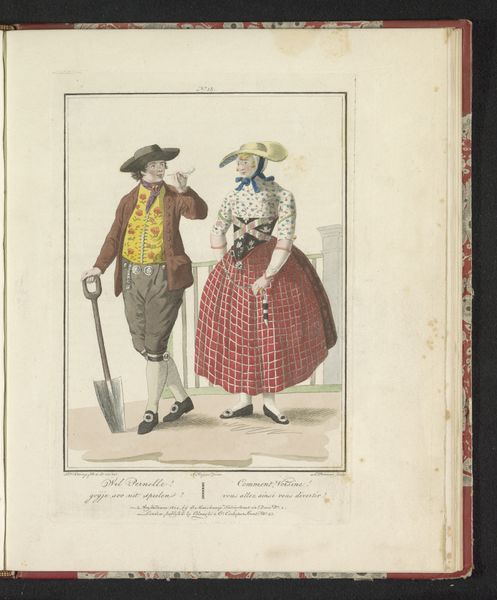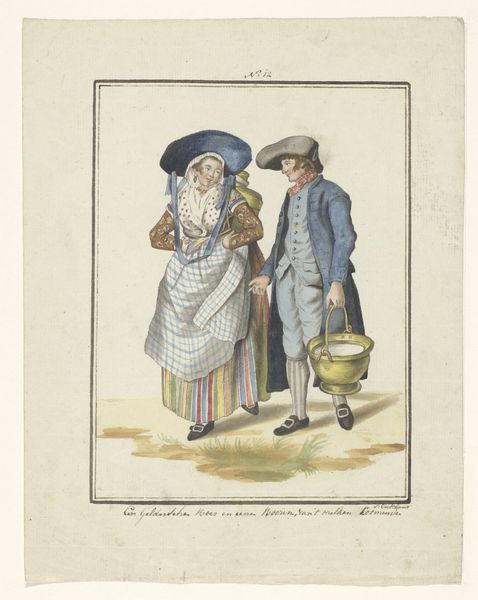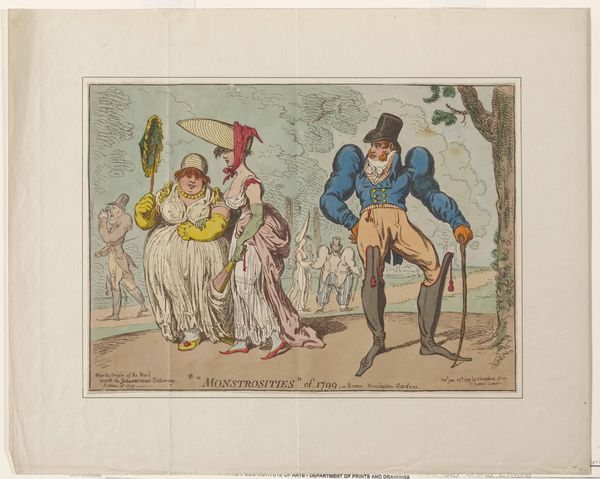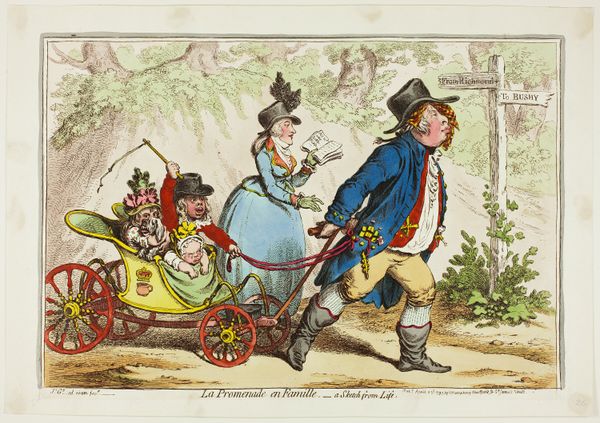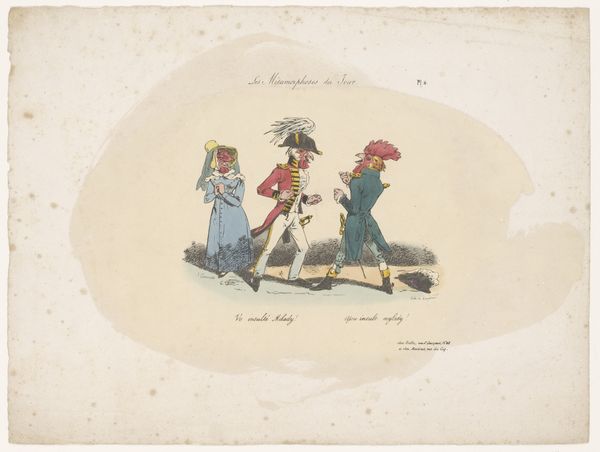
drawing, print, watercolor
#
portrait
#
drawing
# print
#
caricature
#
figuration
#
watercolor
#
group-portraits
#
romanticism
#
watercolour illustration
#
genre-painting
#
history-painting
Dimensions: Sheet: 5 13/16 × 7 3/8 in. (14.8 × 18.8 cm)
Copyright: Public Domain
Curator: This piece, "Me and My Wife and Daughter," is a print by Henry William Bunbury, dating to the late 18th century. It's currently held in the collection of the Metropolitan Museum of Art. Editor: Well, my first impression is amusement! There’s something so absurd and precarious about how this family is perched on that donkey. Curator: Precisely! Bunbury was known for his satirical caricatures. Here, we see a man, presumably the artist, with his wife and daughter riding a donkey, each in their individual basket or seat. We can unpack how gender and class operate within visual representation during this period. Notice the ostentatious hats adorned with feathers? Editor: Yes, the hats draw the eye, but then it’s drawn down to those rather spindly donkey legs laboring beneath the weight. There's a clear juxtaposition of grandeur and awkwardness. Is the symbolism here about the weight of family burdens, perhaps? Curator: One could argue that. Bunbury often critiqued social norms and exposed societal foibles. The Romantic period idealized nature but was deeply class conscious. Consider how the work operates as social commentary: The artist places his subjects out in the country, which could have class and cultural significance; they may appear to be members of the leisure class, and it subtly mocks aspirations to social mobility, revealing tensions around identity and belonging in Georgian society. Editor: And look, there's a building, probably a grand manor house, in the distance. It's like they're headed towards an idealized version of life that may be out of reach given the circumstances of the characters and the situation depicted here. Curator: Exactly. The image underscores anxieties around status and wealth. We can interpret it through the lens of post-colonial and feminist theory too, where domestic life, as we observe here, is not as picturesque or idyllic as people may think it is. It reveals so much when situating this within the larger discourses on identity, gender and social structure. Editor: Fascinating. It seems the artist is showing the idealized life against the difficult journey, both physically and metaphorically. For me, the core tension exists in the conflicting imagery of wealth and aspiration versus the underlying themes of absurdity and the everyday struggles to acquire them. Curator: A perfect summation! I’ve really come to view this through new lenses after your insights. Editor: As have I!
Comments
No comments
Be the first to comment and join the conversation on the ultimate creative platform.
